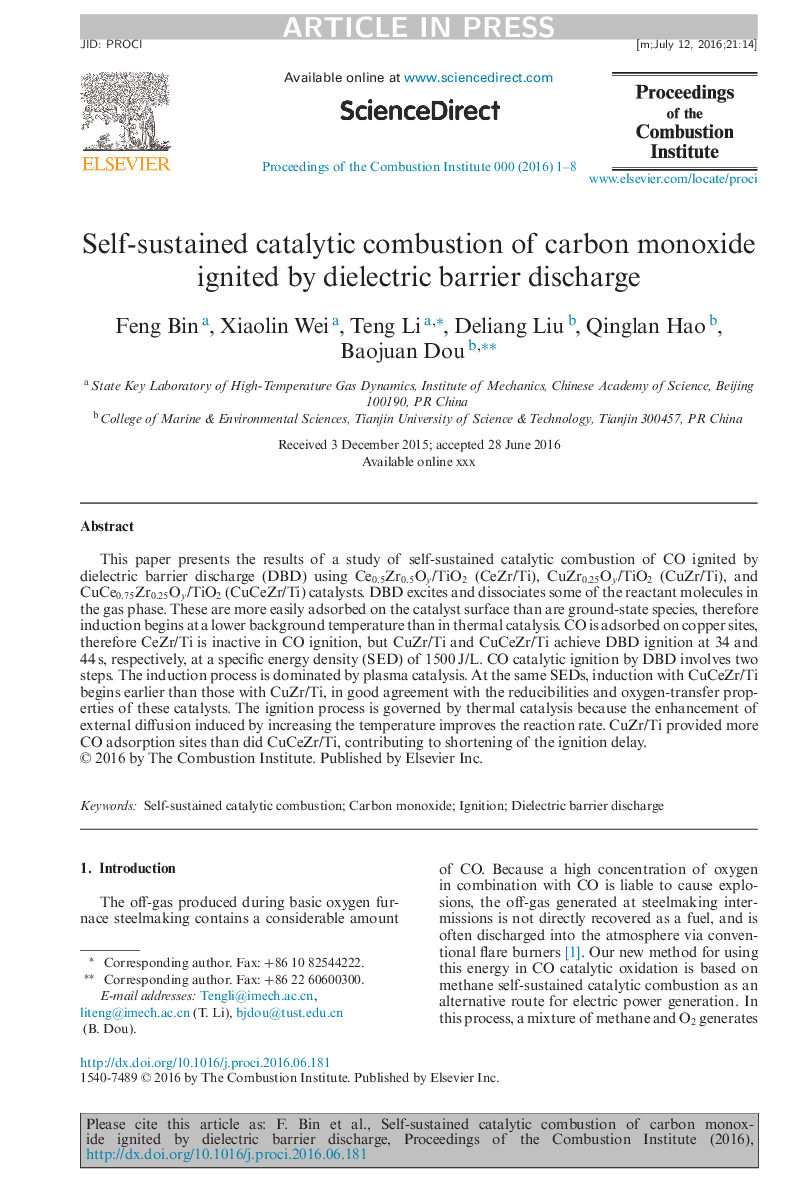| Article ID | Journal | Published Year | Pages | File Type |
|---|---|---|---|---|
| 4915481 | Proceedings of the Combustion Institute | 2017 | 8 Pages |
Abstract
This paper presents the results of a study of self-sustained catalytic combustion of CO ignited by dielectric barrier discharge (DBD) using Ce0.5Zr0.5Oy/TiO2 (CeZr/Ti), CuZr0.25Oy/TiO2 (CuZr/Ti), and CuCe0.75Zr0.25Oy/TiO2 (CuCeZr/Ti) catalysts. DBD excites and dissociates some of the reactant molecules in the gas phase. These are more easily adsorbed on the catalyst surface than are ground-state species, therefore induction begins at a lower background temperature than in thermal catalysis. CO is adsorbed on copper sites, therefore CeZr/Ti is inactive in CO ignition, but CuZr/Ti and CuCeZr/Ti achieve DBD ignition at 34 and 44Â s, respectively, at a specific energy density (SED) of 1500Â J/L. CO catalytic ignition by DBD involves two steps. The induction process is dominated by plasma catalysis. At the same SEDs, induction with CuCeZr/Ti begins earlier than those with CuZr/Ti, in good agreement with the reducibilities and oxygen-transfer properties of these catalysts. The ignition process is governed by thermal catalysis because the enhancement of external diffusion induced by increasing the temperature improves the reaction rate. CuZr/Ti provided more CO adsorption sites than did CuCeZr/Ti, contributing to shortening of the ignition delay.
Related Topics
Physical Sciences and Engineering
Chemical Engineering
Chemical Engineering (General)
Authors
Bin Feng, Wei Xiaolin, Li Teng, Liu Deliang, Hao Qinglan, Dou Baojuan,
